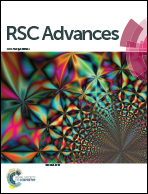Betulinic acid acetate, an antiproliferative natural product, suppresses client proteins of heat shock protein pathways through a CDC37-binding mechanism†
Abstract
CDC37 has emerged as a promising target in antitumor chemotherapy because of its significant role in oncogenic signaling networks. In an effort to discover novel CDC37 inhibitors, a shape-based model derived from celastrol was built. A high-throughput virtual screening of ChemDiv based on the ROCS model has led to the identification of several pentacyclic triterpenes with high shape similarity with celastrol, among which betulinic acid acetate was the most attractive. Bio-layer interferometry assay demonstrated that betulinic acid acetate binds to CDC37 with a KD value (25.7 μM) on the same order of magnitude as that of celastrol. This compound not only shows comparable antiproliferative activity against a series of cancer cell lines, but also causes the degradation of HSP90 client proteins in PC-3 cell lines without inducing the expression of HSP70. In addition, betulinic acid acetate inhibits the function of HSP90 in a manner different from celastrol. The HTRF assay indicated that it cannot inhibit the association between HSP90 and CDC37. Given that it is not an α,β-unsaturated carbonyl compound, betulinic acid acetate can be recognized as the first inhibitor that binds to CDC37 through non-covalent binding.


 Please wait while we load your content...
Please wait while we load your content...